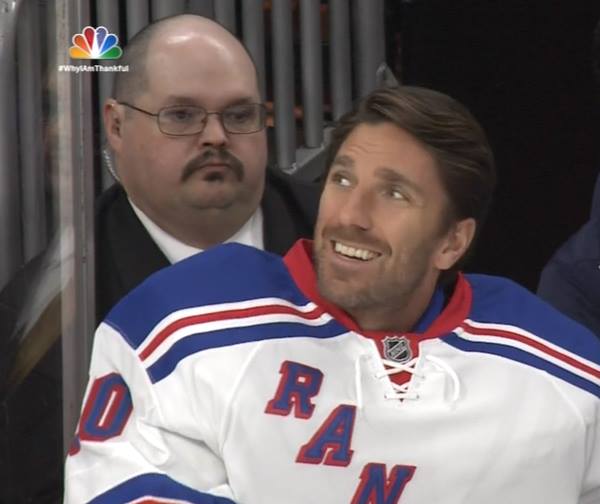1)Dan Girardi is too expensive.
Girardi carries a $5.5 million cap-hit for the next five seasons, taking him through age 36. Even under the assumption that Girardi is a good first-pairing defensive-defenseman, he's still too expensive. Marc Edouard Vlasic makes $4.25 million. Chris Tanev makes $4.45 million. Karl Alzner makes $2.8 million. Travis Hamonic makes $3.86 million. Niklas Hjalmarsson makes $4.1 million. Anton Stralman makes $4.5 million. Good defensive defensemen who can play on the top pair but provide limited offense, simply don't make as much as Girardi does. Even at his best, he's still overpaid.
 |
| Girardi has been a huge problem for advanced stats pundits, but that's not why the Rangers need to part ways with him. |
2)Dan Girardi is getting old.
Girardi turned 31 during the 2015 playoffs. His game is predicated on hitting and shot blocking. He would do anything to win and risks life and limb on the ice. While he doesn't miss many games, it's easy to assume that he plays banged up, and his high-impact game is going to start taking its toll. He's only human. If we throw out the stats and assume he hasn't declined yet, he will soon, and his best hockey likely doesn't last much longer. It certainly won't last until he's 36, which is when his contract runs out. If the Rangers don't move him now, there's a good chance they're paying out $5.5 million to an injured bottom-pairing defenseman in a few years.
3)He doesn't fit the system.
Girardi made his bones and ascended to the league's elite among defensive players in many fan's eyes in a system which played to his strengths. Girardi is a shot-blocker, and in his years with the Rangers, John Tortorella employed a shot-blocking system which allowed Girardi to shine. It was during the 2011-12 season when the Rangers finished in 1st in the East playing this system that most fans started to consider Girardi a first-pairing defenseman. However, current Rangers coach Alain Vigneault likes to employ a mobile defense that can both move their feet and move the puck. Players like Ryan McDonagh, Dan Boyle, and Keith Yandle, like them or not, fit that mold. Dan Girardi does not. Even his biggest proponents will admit that Girardi does not move the puck or skate particularly well. Some would argue that he's simply not a puck-moving defensemen, and sometimes that's fine, but not when your system is predicated on puck-moving.
4)The Rangers defense is good enough to thrive without him.
Let's say the Rangers get rid of Girardi and don't even bring in a replacement. Even then, most general managers would saw off a limb for a top 5 of Ryan McDonagh, Keith Yandle, Marc Staal, Dan Boyle, and Kevin Klein. The Rangers are loaded at defense and it's a mistake to be carrying an expensive contract at a luxury position. It would be like paying out a huge contract to a good goaltender when they have Henrik Lundqvist.
5)The Rangers need cap sapce
In the summer of 2016 Chris Kreider and Kevin Hayes will hit RFA and be looking for raises. Keith Yandle will be an unrestricted free agent, and he is an absolute must-keep (read why here). Keeping in mind that Girardi is overpaid, aging, and plays at a position of strength, he should be the first candidate to be moved for a team that is starving for cap space.
Moving Girardi won't be simple. His no-movement clause comes into play of course. That being said, I think many fans overstate the obstacle that a NMC poses. It doesn't make a trade impossible. A player is not going to stay where he isn't wanted. If the Rangers wanted to move Girardi, he would mostly likely submit a list of teams he'd waive to go to. This limited number of options hurts value, but again, it doesn't make a trade impossible. Many players with NMC's have been moved. It won't be the first time or the last time.
The good news is that most fans still feel Girardi is a good player and so do most front offices. He absolutely has value and somebody will take him. Time is of the essence, though. Nobody is going to take him when he's 35. The Rangers would benefit from moving Girardi in my opinion, but it has to be soon. If not, say goodbye to Keith Yandle, or maybe Hayes or Kreider via trade. I'd rather lose a solid #2 defensive defenseman than any of those guys.




